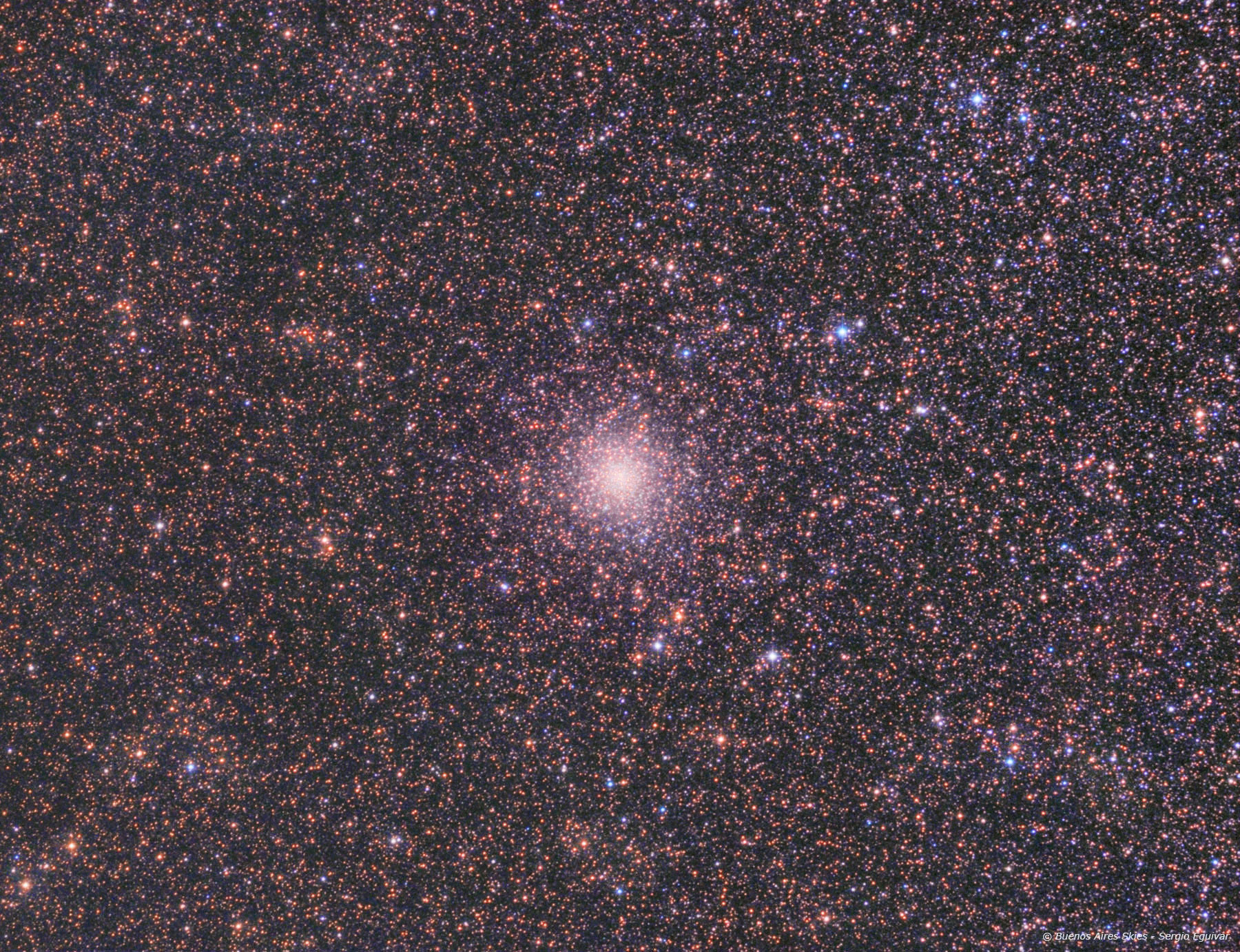
| HOME |
MESSIER 28
GLOBULAR CLUSTER IN SAGITTARIUS
(Image centered at: ra 18 h:24 m / dec - 24º 52')

September 2022, Home Backyard in Martínez, Buenos Aires, Argentina
DATA
TYPE: Globular Cluster
APPARENT DIAMETER: 11,2 arc minutes
APPARENT MAGNITUDE (V): 6,8 (mag)
DISTANCE: 18.300 light years
IMAGE INFORMATION
INSTRUMENT: 8" ORION OPTICS UK (Ultra Grade Optics) w/Televue Paracorr working at at f5,75
CAMERA: QSI 583 WS
MOUNT: SKY WATCHER NEQ6, OAG with Starlight Xpress Lodestar
FILTERS: Baader LRGB Set
SKY CONDITIONS: urban skies - Bortle 8
EXPOSURES: LRGB (60,60,60,60)
OBJECT DESCRIPTION AND IMAGE SESSION
Discovered in July 27th 1764 by French astronomer Charles Messier. Messier 28, is another conspicuous globular cluster in the rich constellation Sagittarius. It is easy to find since it situated at less than one degree from 2.82 (v) Lambda Sagittarii. This Globular has a linear diameter of 60 light years and appears considerably smaller and more compressed than its more impressive neighbor Messier 22. It is slightly elliptical shaped according to H. Shapley. To resolve it into stars, larger instruments are required; it was William Herschel who first described it as a "star cloud".